This post will help you understand the Disable Password Reveal Button Policy Using Intune. We are going to use Configuration Profiles of Intune to implement this policy. Our main purpose here is to help you acquire knowledge of how to Disable The Password Reveal Button Policy Using Intune.
Disable Password Reveal Button Policy Using Intune configuration allows you to control the visibility of the password reveal button within password input interfaces. Enabling this policy will hide the password reveal button after a user enters their password in the text box.
If you choose to disable or leave this policy unconfigured, the password reveal button will appear once a user inputs their password in the text box. By default, the password reveal button is shown when a user enters their password in the text box, and clicking it reveals the password.
This policy affects all Windows components and applications that utilize Windows system controls, including Internet Explorer. This button is a small icon or button often represented by an eye symbol. When clicked or tapped, it temporarily reveals the password input field’s password characters.

- Don’t Allow Passwords to be Saved Policy using Intune
- Turn Off the Picture Password Sign-In Policy using Intune
Windows CSP Details DisablePasswordReveal
We will see Windows CSP Details for this Policy setting DisablePasswordReveal. the decision to enable or disable the password reveal button via policy settings depends on the security and usability requirements of the organization. Enabling it can provide an extra layer of security by preventing unintentional password exposure, but it can also potentially make it more challenging for users to verify their passwords. Disabling it allows for easier verification but may carry some security risks if not managed carefully.
CSP URI – ./Device/Vendor/MSFT/Policy/Config/CredentialsUI/DisablePasswordReveal

Disable Password Reveal Button Policy using Intune
To Disable Password Reveal Button Policy Using Intune, follow the steps stated below:
- Sign in to the Intune Admin Center portal https://intune.microsoft.com/.
- Select Devices > Windows > Configuration profiles > Create a profile.
In Create Profile, I select Windows 10 and later in Platform, and select Profile Type as Settings catalog. Click on the Create button.
| Platform | Profile Type |
|---|---|
| Windows 10 and later | Settings Catalog |
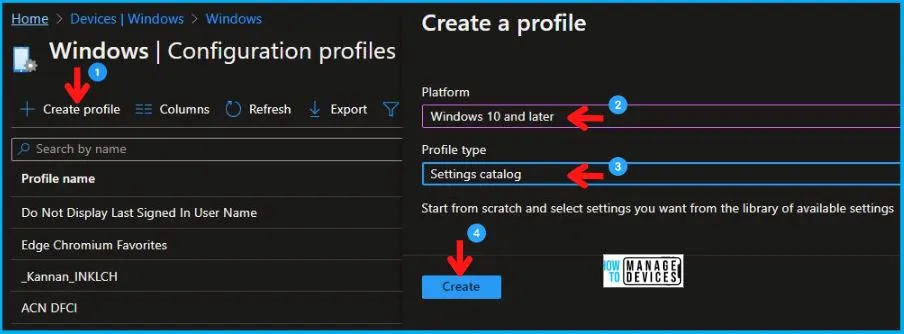
On the Basics tab pane, I provide a name for the policy as “Disable The Password Reveal Button Policy.” Optionally, if you want, you can enter a policy description and proceed by selecting “Next.”
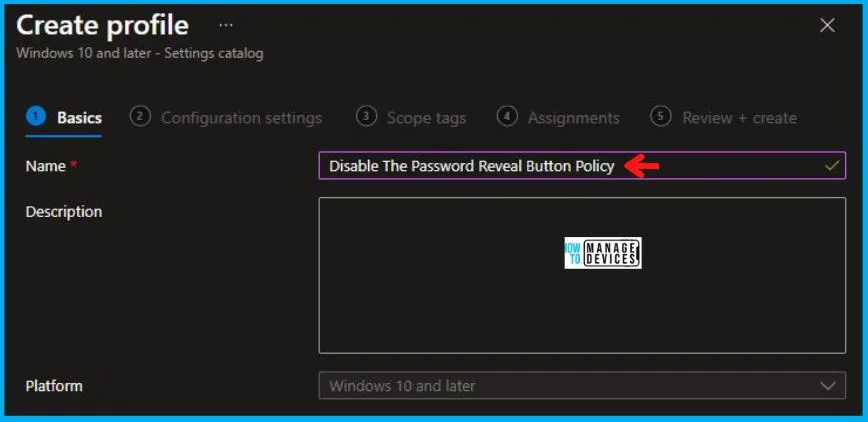
Now in Configuration Settings, click Add Settings to browse or search the catalog for the settings I want to configure.
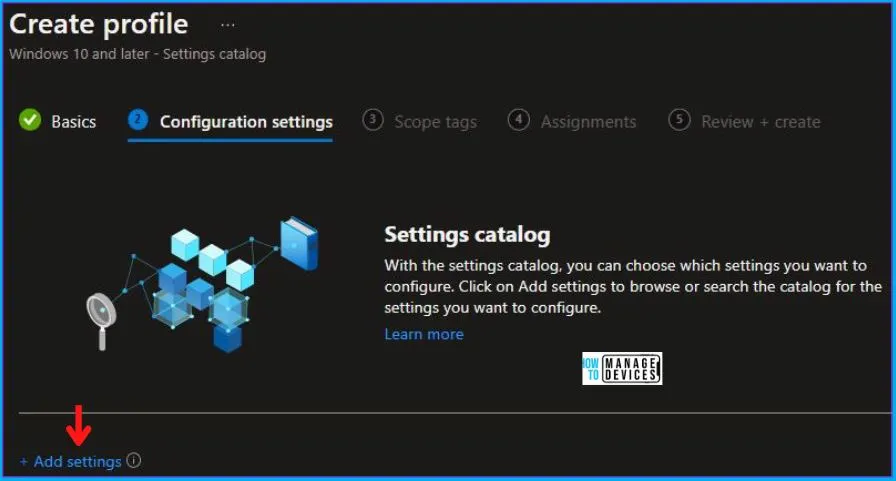
In the Settings Picker windows, I searched for the keyword Reveal Button, I found the category Administrative Templates\Windows Components\Credential User Interface and selected this.
When I select that option as stated above, I see the sub-category, Do not display the password reveal button. After selecting that, click the cross mark at the right-hand corner, as shown below.
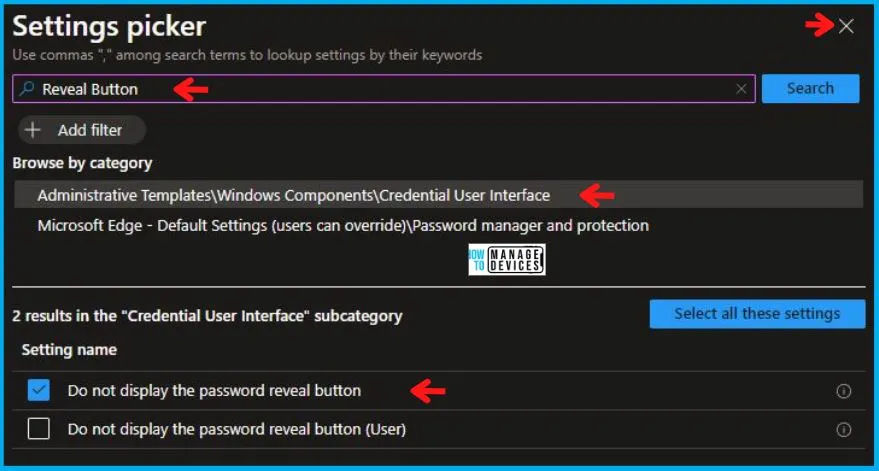
I kept the Do not display the password reveal button as Disabled and clicked on Next to continue.
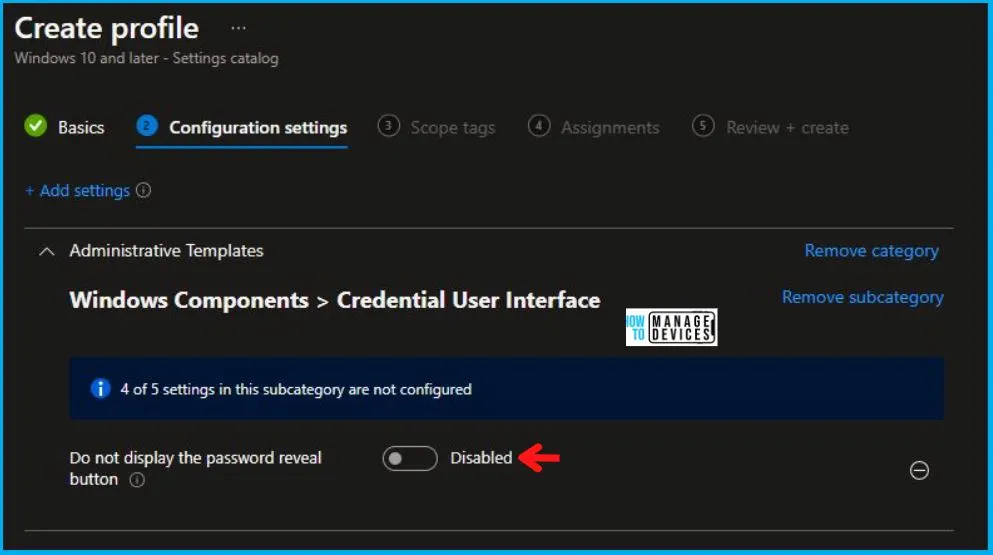
Using Scope tags, you can assign a tag to filter the profile to specific IT groups. One can add scope tags (if required) and click Next to continue. Now in Assignments, in Included Groups, you need to click on Add Groups, choose Select Groups to include one or more groups, and click Next to continue.
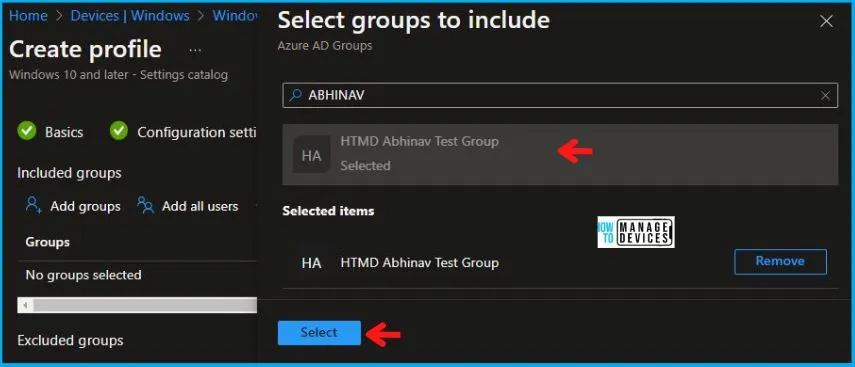
In the Review + Create tab, I review settings. After clicking on Create, changes are saved, and the profile is assigned.
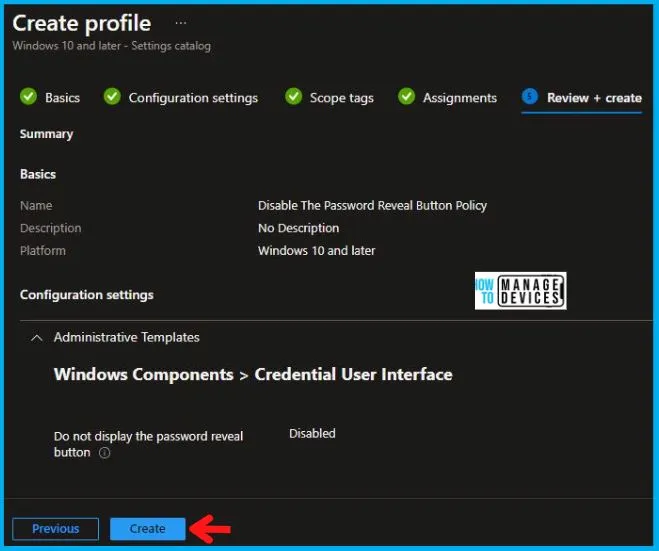
Upon successfully creating the “Disable The Password Reveal Button Policy,“ notification will appear in the top right-hand corner, confirming the action. You can also verify the policy’s existence by navigating to the Configuration Profiles list, where it will be prominently displayed.
Your groups will receive your profile settings when the devices check in with the Intune service. The Policy applies to the device.
Intune Report for Disable Password Reveal Button Policy
From the Intune Portal, you can view the Intune settings catalog profile report, which provides an overview of device configuration policies and deployment status.
To track the assignment of the policy, you need to select the relevant policy from the Configuration Profiles list. Reviewing the device and user check-in status lets you determine if the policy has been successfully applied. If you require more detailed information, you can click on “View Report” to access additional insights.
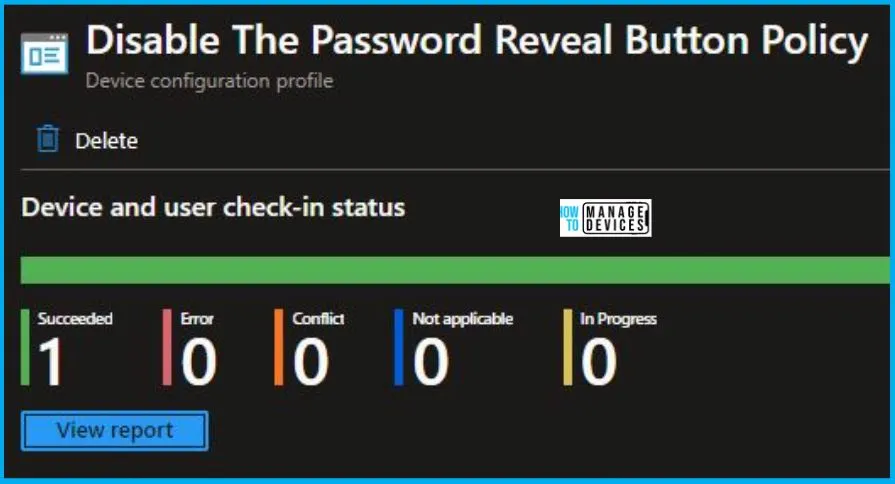
Intune MDM Event Log
To verify the successful implementation of String or integer policies on Windows 10 or 11 devices through Intune, you can leverage event IDs 813 and 814. These event IDs provide valuable insights into the application status of the policy as well as the specific value assigned to the policy on those devices. In the case of this particular policy, the value is a String and is linked to the event ID 814.
By analyzing these event IDs, you can gain a clear understanding of the policy’s application status and the corresponding value associated with it on the devices in question.
To confirm this, you can check the Event log path – Applications and Services Logs – Microsoft – Windows – Devicemanagement-Enterprise-Diagnostics-Provider – Admin.
MDM PolicyManager: Set policy string, Policy: (DisablePasswordReveal), Area: (CredentialsUI), EnrollmentID requesting merge: (5B88AEF1-09E8-43BB-B144-7254ACBBDF3E), Current User: (Device), String: (<disabled/>), Enrollment Type: (0x6), Scope: (0x0).
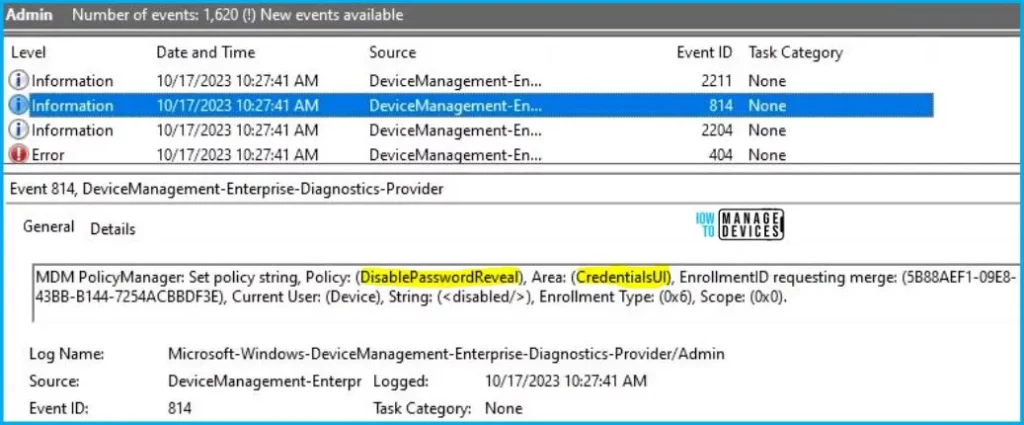
When I opened the above Event log, I found that the policy I have applied to the device has been successfully implemented. By reviewing the log entry shown in the above image, the Event Viewer, I came across essential information, including the Area and Enrollment ID. These details play a significant role in identifying the corresponding registry path. To locate the specific information, please consult the table provided below:
| Area | Policy | String | Scoped | Event ID |
|---|---|---|---|---|
| CredentialsUI | DisablePasswordReveal | Disabled | Device | 814 |
The details presented in the table above for the Disable The Password Reveal Button Policy Using Intune can be employed to access the registry settings that hold the group policy configurations on a specific computer. To accomplish this, you can execute “REGEDIT.exe” on the target computer and navigate to the precise registry path where these settings are stored.
- Computer\HKEY_LOCAL_MACHINE\SOFTWARE\Microsoft\PolicyManager\providers\5B88AEF1-09E8-43BB-B144-7254ACBBDF3E\default\Device\CredentialsUI
When you navigate the above path in the Registry Editor, you will find the registry key named
